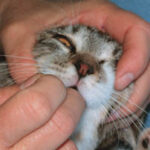There’s an undeniable allure to cats boasting round faces, large, expressive eyes, and those uniquely adorable, slightly pushed-in noses. Flat Face Cats, often referred to as brachycephalic breeds, are not just visually captivating; they possess personalities that are equally enchanting, making them beloved companions in homes worldwide.
However, it’s crucial to understand that the very physical traits that contribute to the popularity of flat face cat breeds can also predispose them to certain health concerns. Prospective owners should be well-informed about these potential issues to ensure they can provide the best possible care. Thorough research into the specific needs of each breed is essential before welcoming a flat face kitten into your home. This preparation will not only help you find the perfect feline companion but also equip you to nurture their health and happiness throughout their lives.
Exploring Popular Flat Face Cat Breeds
1. Persian Cats: The Epitome of Laid-Back Luxury
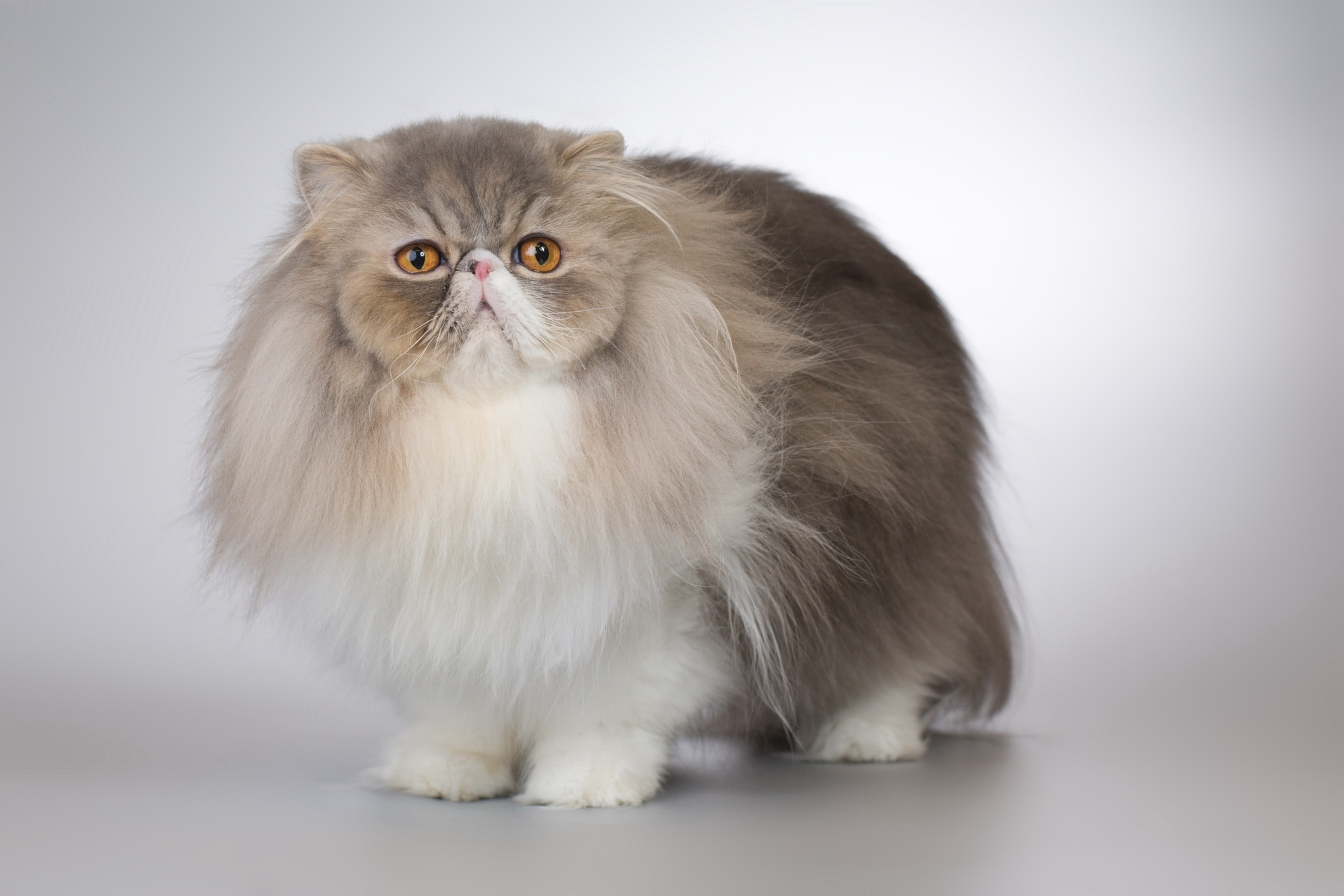 longhaired gray and white persian cat on a gray background
longhaired gray and white persian cat on a gray background
The Persian cat, with its luxurious long coat and distinctively flat face, stands as one of the most globally recognized and cherished cat breeds. Beyond their striking physical appearance, Persian cats are celebrated for their gentle and placid temperaments. Stephen Quandt, a certified feline training and behavior specialist, highlights their even-keeled nature and peaceful demeanor as key factors in their enduring popularity. Persian cats are truly the epitome of calm feline companions.
A Persian’s ideal day often involves lounging in sunbeams or cuddling on laps, rather than engaging in high-energy activities like scaling cat trees or chasing toys. “They engage in play gently, almost as a mere afterthought,” Quandt observes, suggesting that simple toys like feather wands are perfectly sufficient for their leisurely play sessions. This breed is content with quiet affection and minimal exertion.
Grooming is a significant aspect of caring for a Persian cat. Their magnificent long fur requires daily combing and brushing to prevent matting. However, Persians often appreciate this grooming time, frequently expressing their contentment with soft meows and gentle purrs, turning what could be a chore into a bonding ritual.
2. British Shorthair: The Teddy Bear of the Cat World
 british blue british shorthair cat close-up
british blue british shorthair cat close-up
British Shorthair cats, while possessing a somewhat more pronounced muzzle compared to breeds like Persians, still distinctly feature the charming round face characteristic of flat face cats. This rounded facial structure, combined with their dense, plush fur, gives them an endearing resemblance to a teddy bear, making them instantly appealing.
These robust felines are known for their grounded nature, preferring to keep all four paws firmly on the floor. British Shorthairs are not particularly fond of being picked up and cuddled excessively. While they are affectionate and enjoy human company, they also value their independence and are comfortable spending time alone. This balance of affection and independence makes them an excellent choice for individuals or families with busy lifestyles.
3. British Longhair: An Intelligent and Trainable Companion
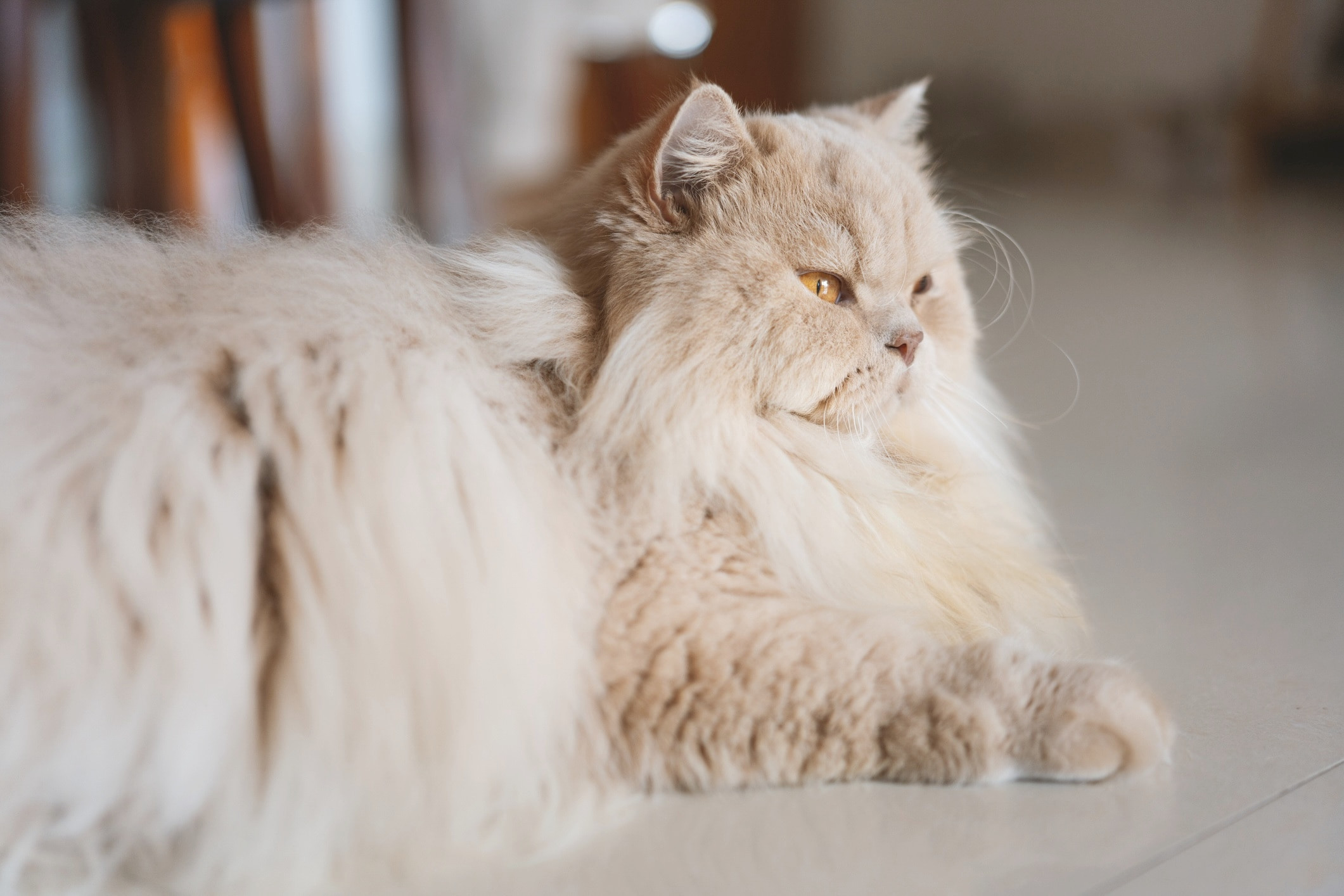 longhaired cream-colored british longhair cat lying down
longhaired cream-colored british longhair cat lying down
The British Longhair is a delightful blend of the British Shorthair and Persian breeds, inheriting the lush, thick coat from the Persian and the rounded face from the British Shorthair. They also benefit from a wonderful temperament derived from both parent breeds, making them exceptionally pleasant companions.
Notably intelligent and highly motivated by food, British Longhair cats are remarkably trainable. This characteristic opens up exciting opportunities for engaging in fun training sessions, which can be a fantastic way to strengthen the bond between cat and owner. Their eagerness to learn tricks provides not only mental stimulation for the cat but also enjoyable interaction and entertainment for their human families.
4. Exotic Shorthair: The Low-Maintenance Persian
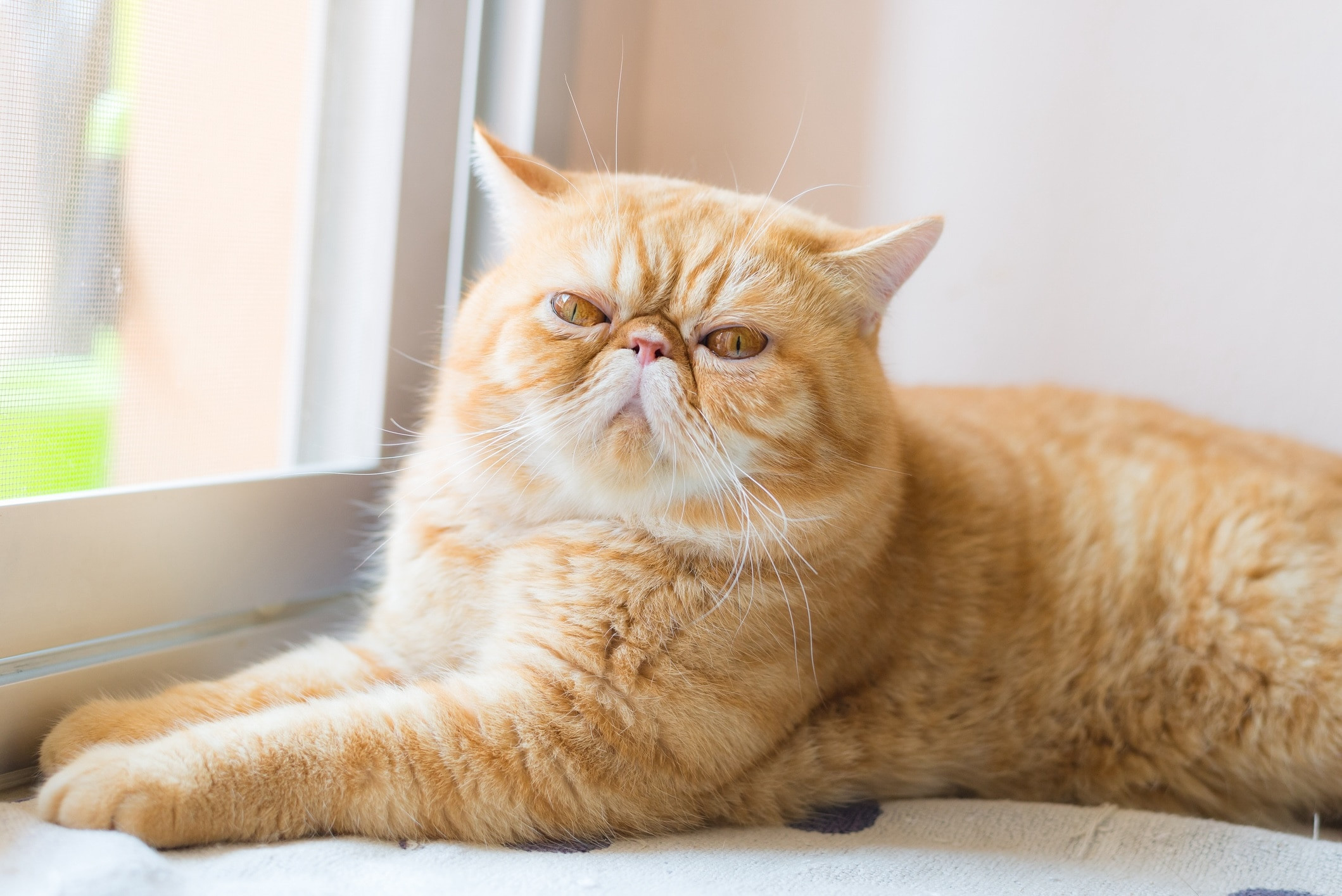 orange tabby exotic shorthair cat lying by a windowsill
orange tabby exotic shorthair cat lying by a windowsill
For those who are captivated by the Persian cat’s appearance but are daunted by the extensive grooming demands, the Exotic Shorthair offers an ideal compromise. Affectionately nicknamed the “lazy man’s Persian,” the Exotic Shorthair retains the Persian’s flat face and sweet disposition but with a short, dense coat that requires significantly less maintenance. A weekly brushing is typically sufficient, with perhaps more frequent sessions needed during shedding season.
Similar to their Persian relatives, Exotic Shorthairs are not known for their love of heights or acrobatic climbing. However, they are generally more playful and energetic than Persians, making them well-suited to more active households, including families with children and other pets. Proper introductions are always recommended to ensure harmonious multi-pet households.
5. Himalayan Cats: The Colorful Pointed Fluff Balls
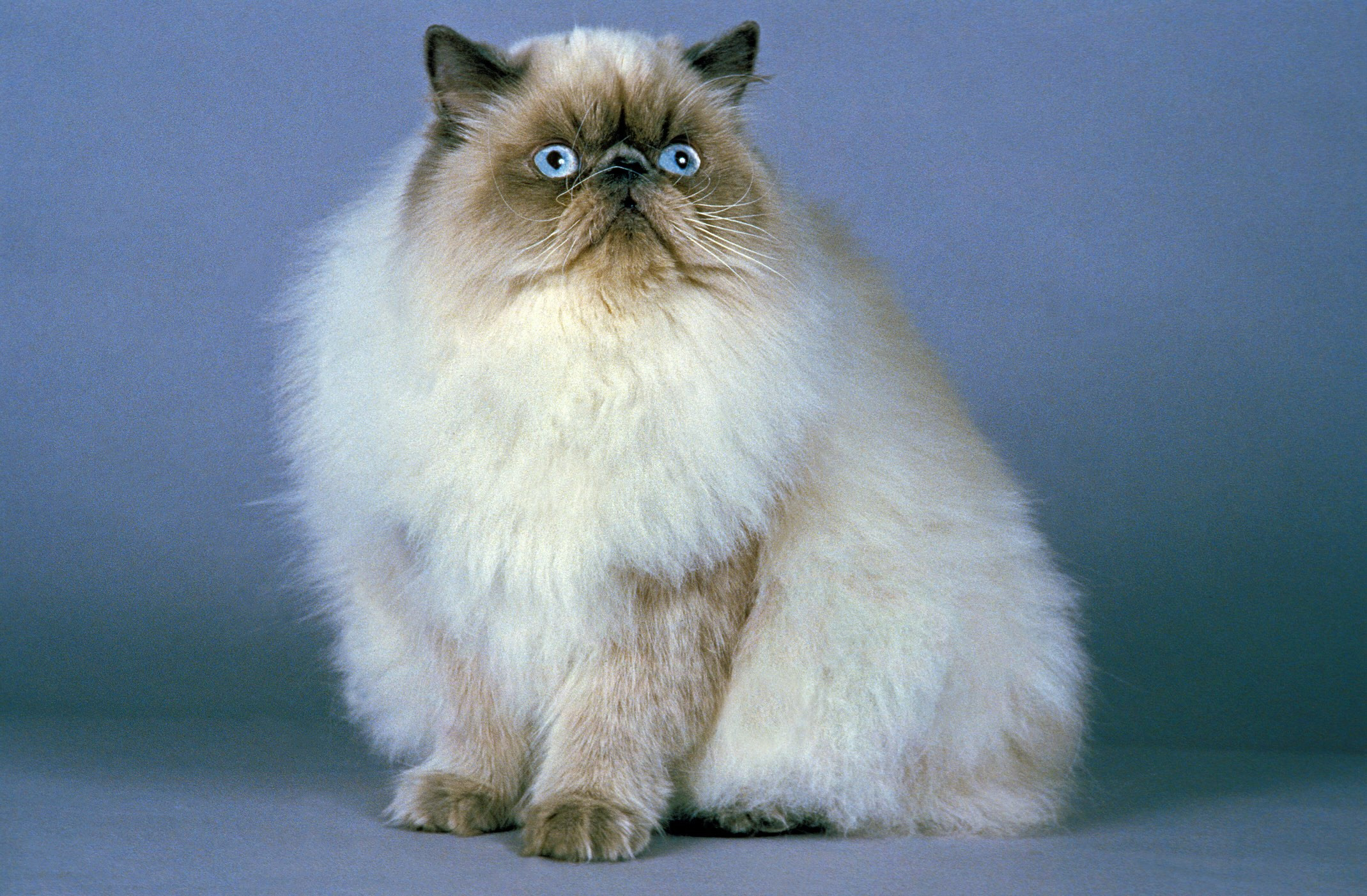 himalayan cat sitting against a blue background
himalayan cat sitting against a blue background
The Himalayan cat is a captivating breed resulting from the crossbreeding of Persians and Siamese. They inherit the best of both worlds, sharing many of the Persian’s gentle traits and fluffy coat, while adopting the striking color point markings (darker coloration on the ears, face, paws, and tail) from the Siamese. Despite their fluffy appearance, Himalayans are medium-sized cats, typically weighing between 7 and 12 pounds.
Himalayans are known for their adaptable and friendly nature, readily offering affection to anyone who treats them kindly. This makes them wonderful family pets, fitting well into various household dynamics, provided their daily grooming requirements are consistently met. Their gentle demeanor and striking looks make them a truly cherished flat face cat breed.
6. Scottish Fold: The Celebrity-Loved Breed with Folded Ears
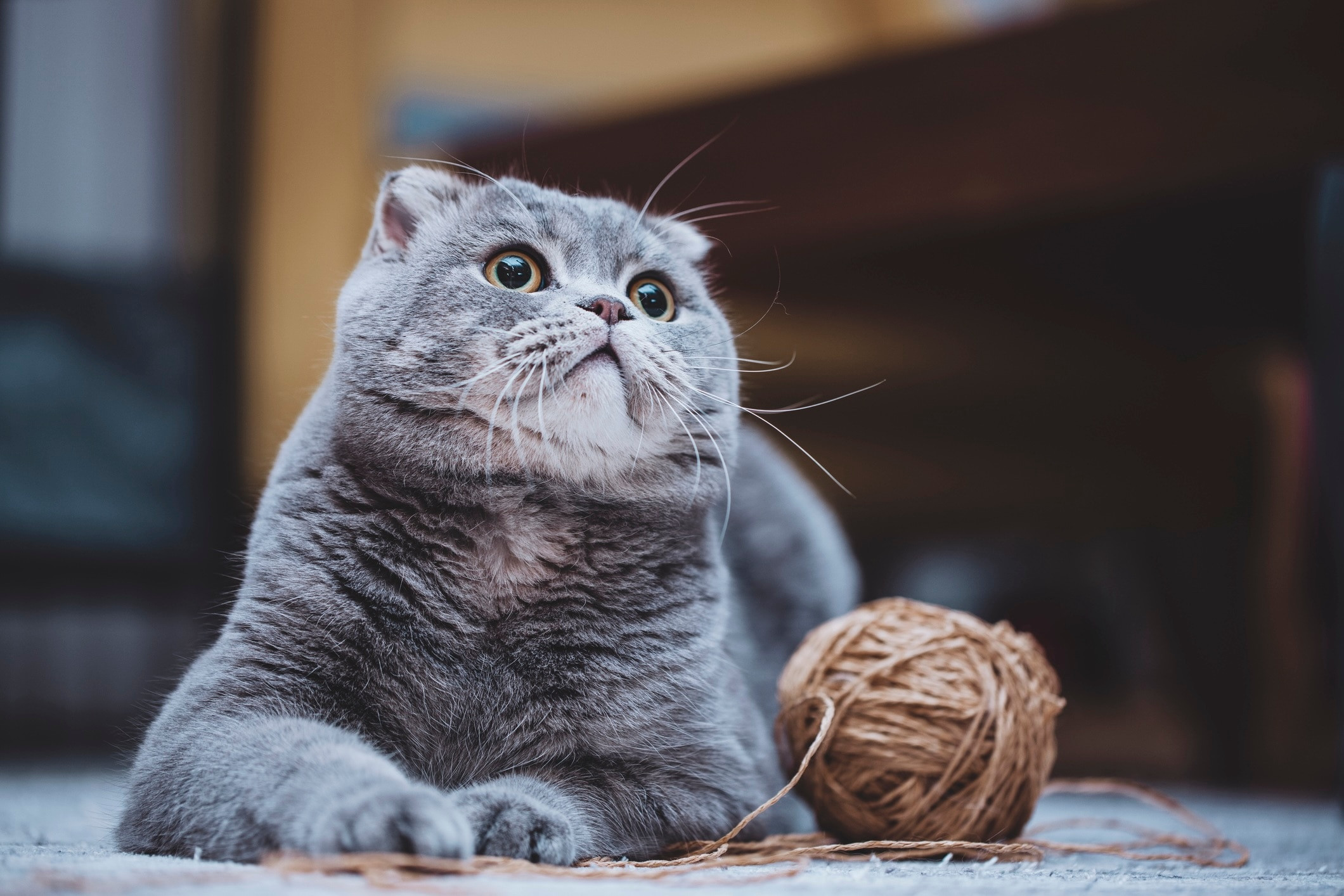 gray scottish fold lying next to a ball of yarn
gray scottish fold lying next to a ball of yarn
Scottish Fold cats have surged in popularity, largely due to their uniquely rounded facial features, distinctive folded ears, and their association with celebrity figures like Taylor Swift. However, it’s important to acknowledge the ethical considerations surrounding this charming flat face cat breed.
While Scottish Folds are known for being “sweet and friendly,” as described by Stephen Quandt, their signature folded ears are a result of a genetic mutation. This mutation is linked to osteochondrodysplasia (OCD), a painful and degenerative joint condition. This genetic predisposition raises serious welfare concerns for the breed.
Prospective owners of Scottish Folds must be particularly vigilant about recognizing signs of discomfort in their cats. Subtle changes in behavior, such as altered eating or bathroom habits, increased vocalization, reduced interest in play, or even uncharacteristic aggression, should not be ignored. Understanding feline body language is crucial for Scottish Fold owners, and any signs of potential pain or distress warrant immediate veterinary consultation.
7. Selkirk Rex: The Curly-Coated Charmer
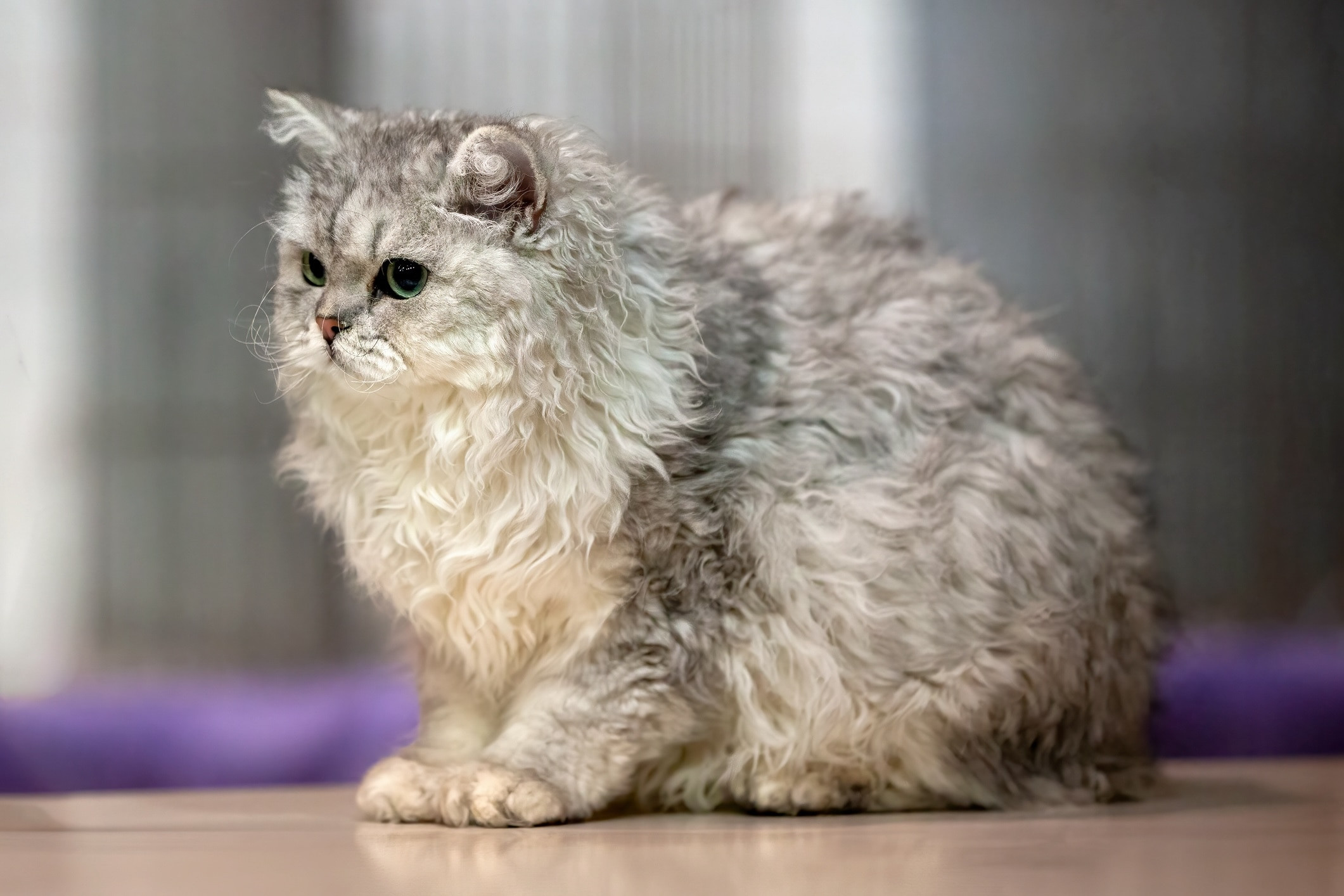 curly-coated selkirk rex cat loafing on the floor
curly-coated selkirk rex cat loafing on the floor
The Selkirk Rex is distinguished by its unique curly coat, a trait stemming from a naturally occurring genetic mutation. Their fur, inherited in part from Persian and British Shorthair outcrossings, is dense and ranges from tight ringlets to looser waves. While they do shed, their grooming needs are relatively moderate, requiring weekly brushing. However, excessive brushing should be avoided as it can disrupt their curls, leading to frizz or breakage.
In terms of personality, Selkirk Rex cats are generally affectionate and enjoy human interaction. Early socialization with a variety of people, sights, and sounds is beneficial to ensure they develop into well-adjusted and confident adult cats. Their playful yet gentle nature makes them delightful companions for individuals and families alike.
Understanding Health Considerations for Flat Face Cats
While all cats can experience health issues throughout their lives, flat face cats are predisposed to certain health challenges due to their unique brachycephalic anatomy. The structure of their skulls, characterized by shorter bones, results in a rounded face, short nose, and often an underbite, where the lower jaw protrudes further than the upper jaw.
Brachycephalic Obstructive Airway Syndrome (BOAS)
Brachycephalic Obstructive Airway Syndrome, or BOAS, is a condition encompassing a range of respiratory problems common in brachycephalic breeds of both cats and dogs.
In flat face cats, their anatomical features can lead to breathing difficulties due to several factors:
- Elongated Soft Palate: An overly long roof of the mouth can obstruct airflow.
- Hypoplastic Trachea: A narrowed windpipe restricts the passage of air.
- Everted Laryngeal Saccules: Small sacs within the larynx can turn outwards and obstruct the airway.
- Stenotic Nares: Narrow nostrils limit the amount of air that can be inhaled.
While the sounds of snoring and snorting from a flat face cat might seem endearing, they can be indicative of BOAS. Other symptoms, varying in severity depending on the extent of airway obstruction, include open-mouthed breathing, noisy respiration, intolerance to exercise and heat, coughing, gagging, reverse sneezing, and increased effort when breathing.
These symptoms can worsen if the cat is overweight, exposed to hot and humid conditions, or under stress. Owners of flat face cats must be vigilant in monitoring for signs of respiratory distress.
Open-mouth breathing in cats is always a serious sign and requires immediate veterinary attention. In severe cases of BOAS, surgical intervention may be necessary to improve airflow and alleviate breathing difficulties.
Eye Problems
Flat face cats often have shallow eye sockets, causing their eyes to protrude slightly. This conformation makes their eyes more vulnerable to injury and dryness, as their eyelids may not fully close. Consequently, they are prone to inflammation and corneal ulcers (scratches on the eye’s surface). Chronic watery eyes, often accompanied by tear staining, are also common. The compressed facial structure can also lead to misshapen tear ducts, further contributing to tear overflow.
Consult with your veterinarian about appropriate cleaning solutions and preventative measures to maintain your flat face cat’s eye health.
Signs of eye problems requiring veterinary attention include squinting, increased eye discharge (especially if yellow or green), pawing or rubbing at the eyes, and redness or cloudiness of the eyes.
Dental Disease
Dental disease is highly prevalent in the feline population, affecting a significant majority of cats over four years of age. However, flat face cats may face an even greater risk due to their unique jaw and teeth alignment. Their anatomy often results in overcrowded and misaligned teeth, which can promote increased plaque and tartar buildup.
Daily tooth brushing and regular veterinary dental checkups and cleanings are crucial for preventing dental issues in flat face cats. Proactive dental care is essential to maintain their oral health and overall well-being.
By understanding the specific needs and potential health considerations of flat face cats, owners can provide informed and loving care, ensuring these charming companions enjoy happy and healthy lives.

